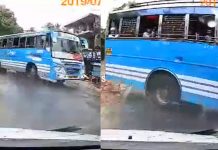35 years later: Revisiting the Kanishka air crash
June 23, 2020 marks the 35th anniversary of Air India bombing, the worst act of aviation terrorism in history. The Air India flight 182 was flying over the Atlantic Ocean en route New Delhi from Montreal via London on June 23, 1985 when it exploded in mid-air, killing all 329 people on board, including 22 crew members.
The explosion was caused by a bomb which was detonated in the cargo bay of the plane which consequently crashed it into the sea, 190 km from the coast of Ireland. A separate luggage bomb destined for a second Air India flight killed two Japanese baggage handlers and injured four at Tokyo’s Narita airport the same day.
The prolonged investigation and trial of the case which lasted 20 years and cost the Canadian government nearly 130 million Canadian Dollars finally ended in a 10-year sentence for the bomb-maker but the conspirators walked free.
The Air India attack did not come out of nowhere. There were plenty of warnings. Indian officials had reportedly warned Canadian officials on numerous occasions that Sikh extremists in Canada – men who claimed to be fighting for a separate Sikh homeland- were plotting and sponsoring criminal acts in India.
A Canadian public inquiry concluded on June 17,2010 that authorities should have known an Air India flight in 1985 was a likely terrorist target. Former Supreme Court Justice John Major said a cascading series of errors contributed to the failure of Canada’s police and security forces to prevent the atrocity.
John Major had spent almost two years hearing from more than 200 witnesses and reviewing 17,000 classified documents.
“The level of error, incompetence, and inattention which took place before the flight was sadly mirrored in many ways for many years, in how authorities, governments, and institutions dealt with the aftermath of the murder of so many innocents,” Major said in a massive, five-volume report.
The attacks were blamed on Sikh militants based in British Columbia who, prosecutors said, sought revenge for a deadly 1984 raid by security forces on the Golden Temple in Amritsar.
Before the bombings, Canadian intelligence officials had apparently learned of the plot by Sikh separatists in Canada and India to launch a terror attack.
“There were individuals in the Sikh community who claimed to have knowledge about the bombing and its perpetrators,” said Justice Major.
Soon after the bombing, media reported details of an alleged plot but it took police about 15 years to charge anyone for the attack.
The only person successfully convicted in the Air India bombing was Inderjit Singh Reyat(L), who pleaded guilty in 2003 to manslaughter after admitting to making the bombs. He was released in 2008 and is out on bail.
Despite the inquiry report indicting the Canadian government for the 1985 Air India Kanishka bombing and recommending ex-gratia compensation for them, families of the victims were unhappy that the killers will never be brought to justice.
“Today’s report only closes a chapter in our lives. There will never be any closure to our tragedy. How can there be a closure for eight couples who lost all their children in the bombing? These old couples are now living in twilight without their lights,” said Toronto-based Bal Gupta, who set up the Air India Victims’ Families Association soon after losing his wife in the bombing June 23, 1985.
The families of victims will journey to Cork, Ireland, to attend a solemn ritual that has become an annual event for them; to remember, to grieve, to bear witness to a crime that goes unpunished to this day. People who lost their mothers and fathers, sons and daughters, brothers and sisters, have not only survived but have rebuilt their lives to a large degree.

At the time of the bombing, Sikh separatists had vowed revenge over the attacks on Sikhs.
During the 19-month trial which Supreme Court Justice Ian Josephson heard without jury, prosecutors contended that Ripudaman Singh Malik and Ajaib Singh Bagri, both Indian-born Sikhs from British Columbia, were part of a radical Sikh group based on Canada’s west coast. Prosecutors presented evidence, they said, proved that the Sikh group built suitcase bombs on Vancouver Island, bought airplane tickets, then planted the explosives on two flights from Vancouver that connected with Air India planes.
It is believed that information of a possible plot of ‘bombing two Air India Boeing 747 planes’ was available to Royal Canadian Mounted Police (RCMP) by October 1984 from two independent sources. The plot included two bombings because the conspirators wanted to make sure that at least one airline bombing was successful which is precisely what happened.
The victims included mostly Canadians, many of Indian origin. Over 80 vacationing children were also on board when the plane exploded in mid-air. Even after searching the crash-site, only 131 bodies could be recovered from the area.
Two decades after the tragedy, a book on the Air India Kanishka bombing by a Canadian journalist, Kim Bolan was shortlisted for one of the highest literary prizes in Canada. The book details the denial of justice to the people who were killed in the biggest pre-9/11 air attack which the world had faced.



















